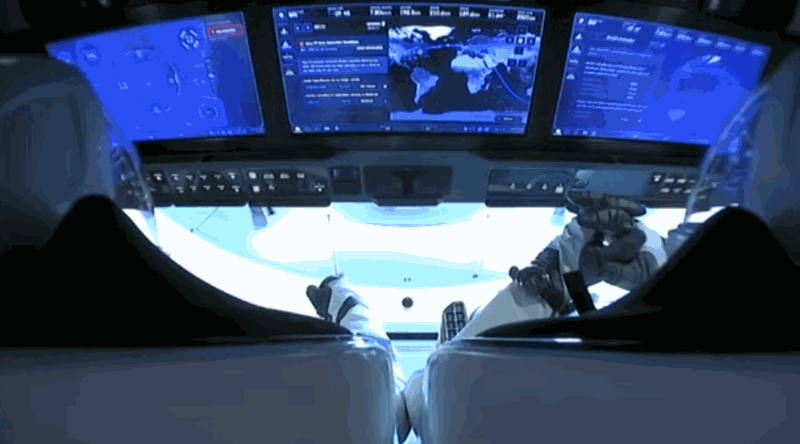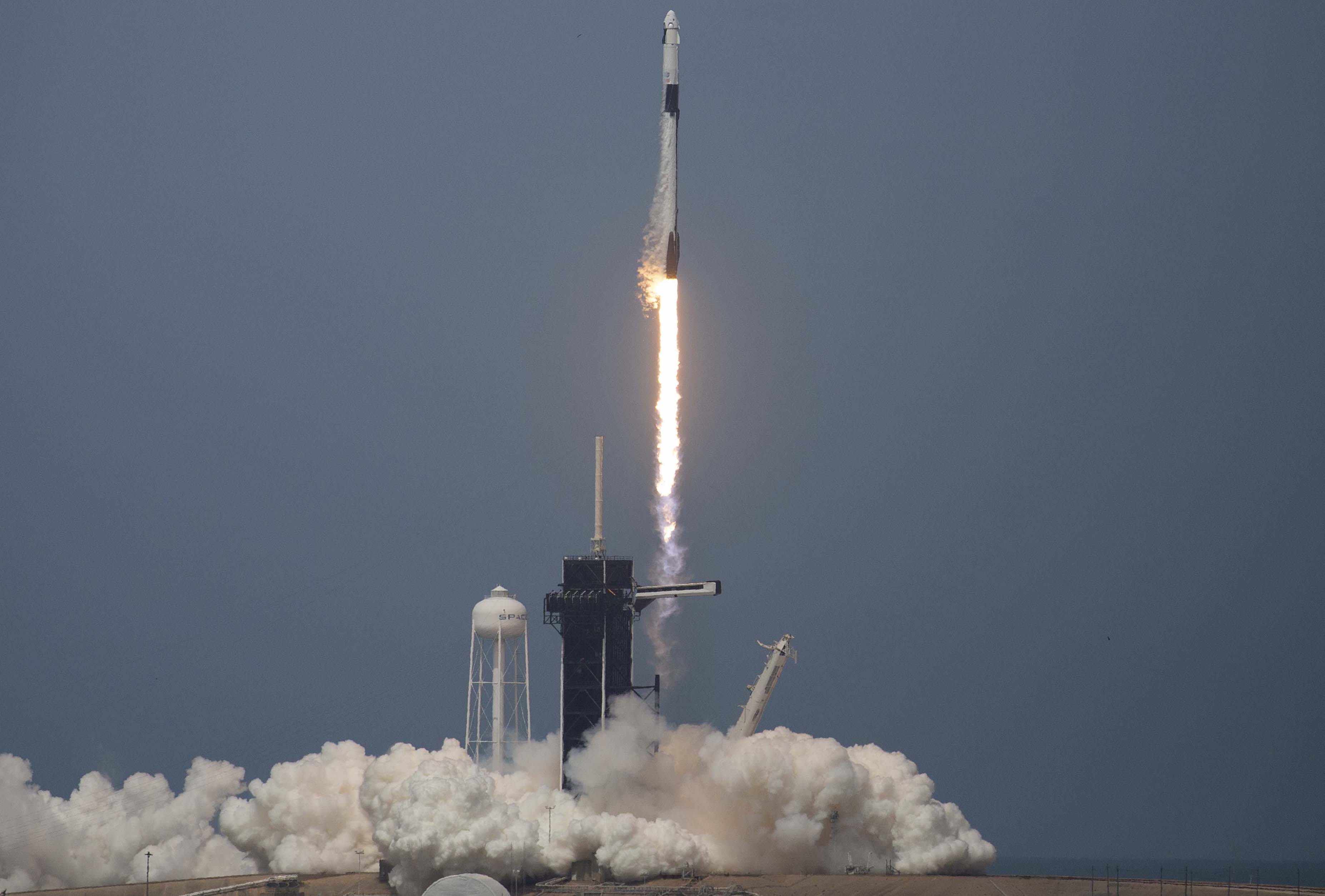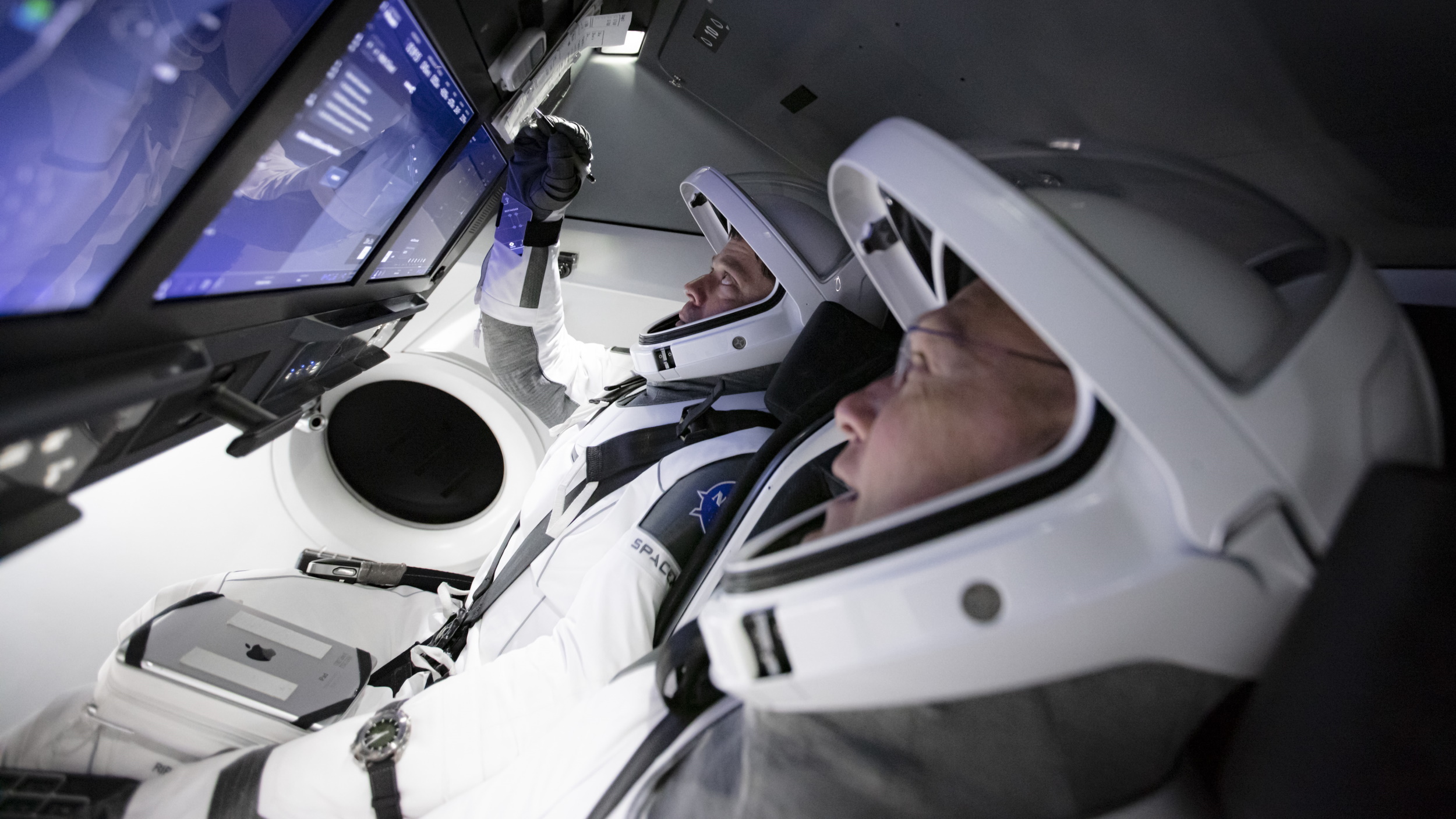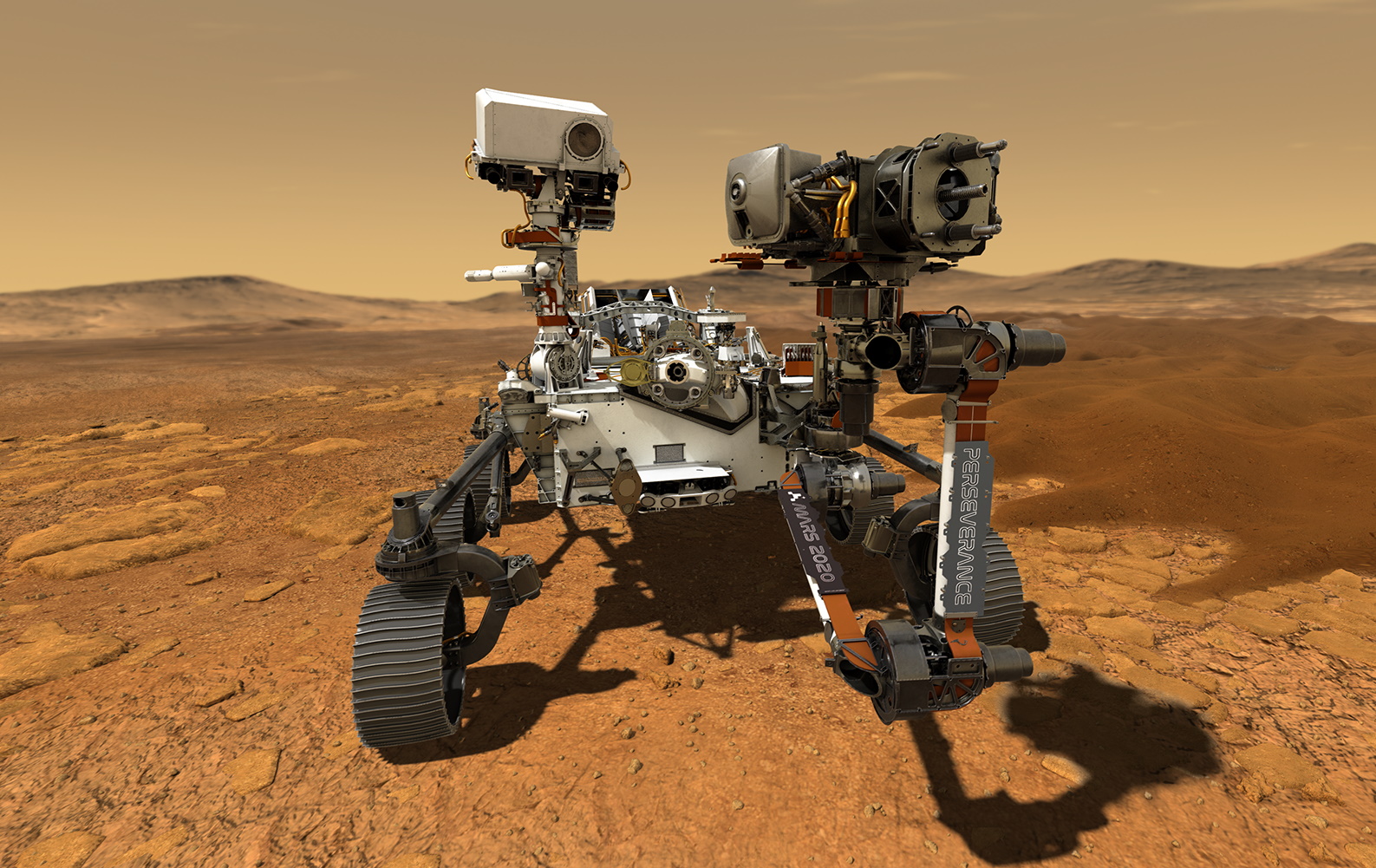Building a brand new spacecraft means knowing when to innovate and when to stick to flight-proven methods, and for Crew Dragon, SpaceX decided to ditch the buttons and dials and go full touchscreen. The astronauts who will fly it later this month have had likewise to ditch years of training and muscle memory — but it’s not all bad, they say.
Bob Behnken and Doug Hurley, the two astronauts soon to launch to the International Space Station aboard a Dragon capsule, will be the first to actually fly the craft in space.
“It’s probably a dream of every test pilot school student to have the opportunity to fly on a brand-new spaceship, and I’m lucky enough to get that opportunity with my good friend here,” said Behnken in a press interview broadcast by NASA .
Of course they’re more than adequately prepared — not only have they spent countless hours in simulators, but they collaborated with SpaceX from early days.
“It was on the order of at least 5 or 6 years ago that we went out to SpaceX and evaluated a bunch of different control mechanisms,” said Hurley. “They were looking at every which way of flying the vehicle, and ultimately they decided on a touchscreen interface.”
“Of course, you know, growing up as a pilot my whole career, having a certain way to control the vehicle, this is certainly different,” he continued. “But we went into it with a very open mind, I think, and worked with them to define the way you interface with it — the way your touches actually registered on the display, in order to be able to fly it cleanly and not make mistakes touching it, not potentially putting in a wrong input.”
Compare the photo at the top of the story with the following shot of the physical simulator where astronauts learn to pilot the Russian Soyuz capsule:
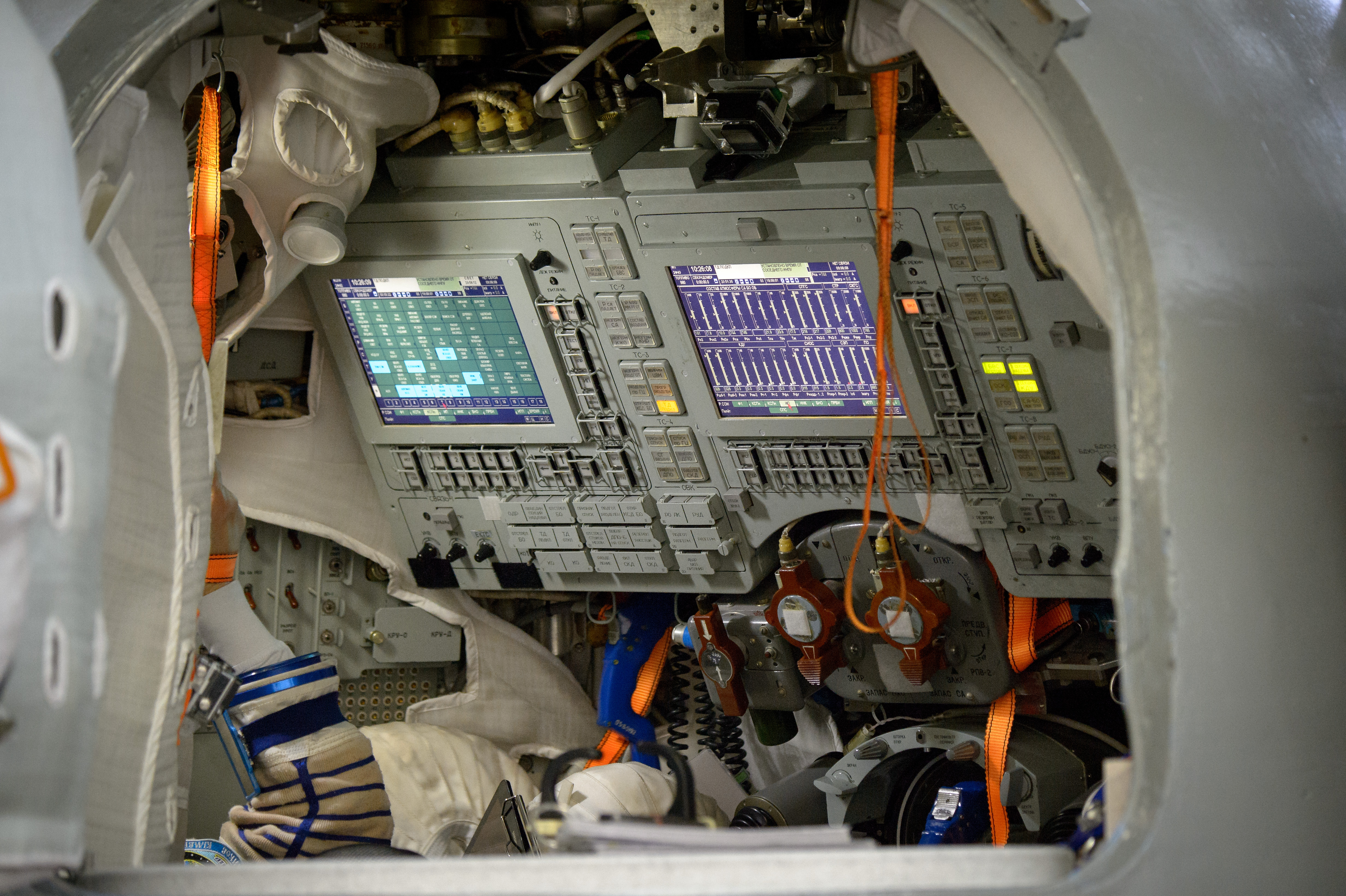
Not a lot of leg room in either one, to be honest.
And of course even modern aircraft are still a mess of physical controls, no doubt familiar to the pilot but inarguably dated in design.
Behnke pointed out that these spacecraft are made with a very specific purpose in mind: Going to and docking with the ISS. No one is going to Mars in one of these things, and that impacts how they’re designed and piloted.
“The flying task is very unique: To come close to the space station and fly in proximity, then slowly come into contact, is maybe a little bit different from what you would see for flying a space shuttle or an aircraft,” said Behnke with characteristic understatement (the difference is night and day). “When we evaluated the touchscreen interface we really did focus on the task at hand and trying to get good performance for that specific task.”
A prototype Crew Dragon has already launched to the ISS and returned, having been piloted both autonomously and remotely.
“It was challenging for us and for them at first to work through those different design issues, but we got to a point where the vehicle, from the manual flying standpoint with the touchscreen, flies very well,” said Hurley.
“The difference is you’ve got to be very deliberate when you’re putting in input, relative to what you would do with a stick,” he continued. “Because you know, when you’re flying an airplane for example, if I push the stick forward it’s going to go down. I actually have to make a concerted effort to do that with the touchscreen, if that makes sense.”
“I don’t think I’m going too far out on a limb to say that the right answer for all flying is not to switch to a touchscreen, necessarily,” said Behnke. “But for the task that we have and to keep ourselves safe flying close to the ISS, the touchscreen is gonna provide us that capability just fine.”
Hurley pointed out that one major advantage is that the controls and readouts are all in the same place: “You’re seeing the docking target, for example, right in the same place you’re looking to fly the vehicle. So it is a little bit different way of doing it, but the design in general has worked out very well.”
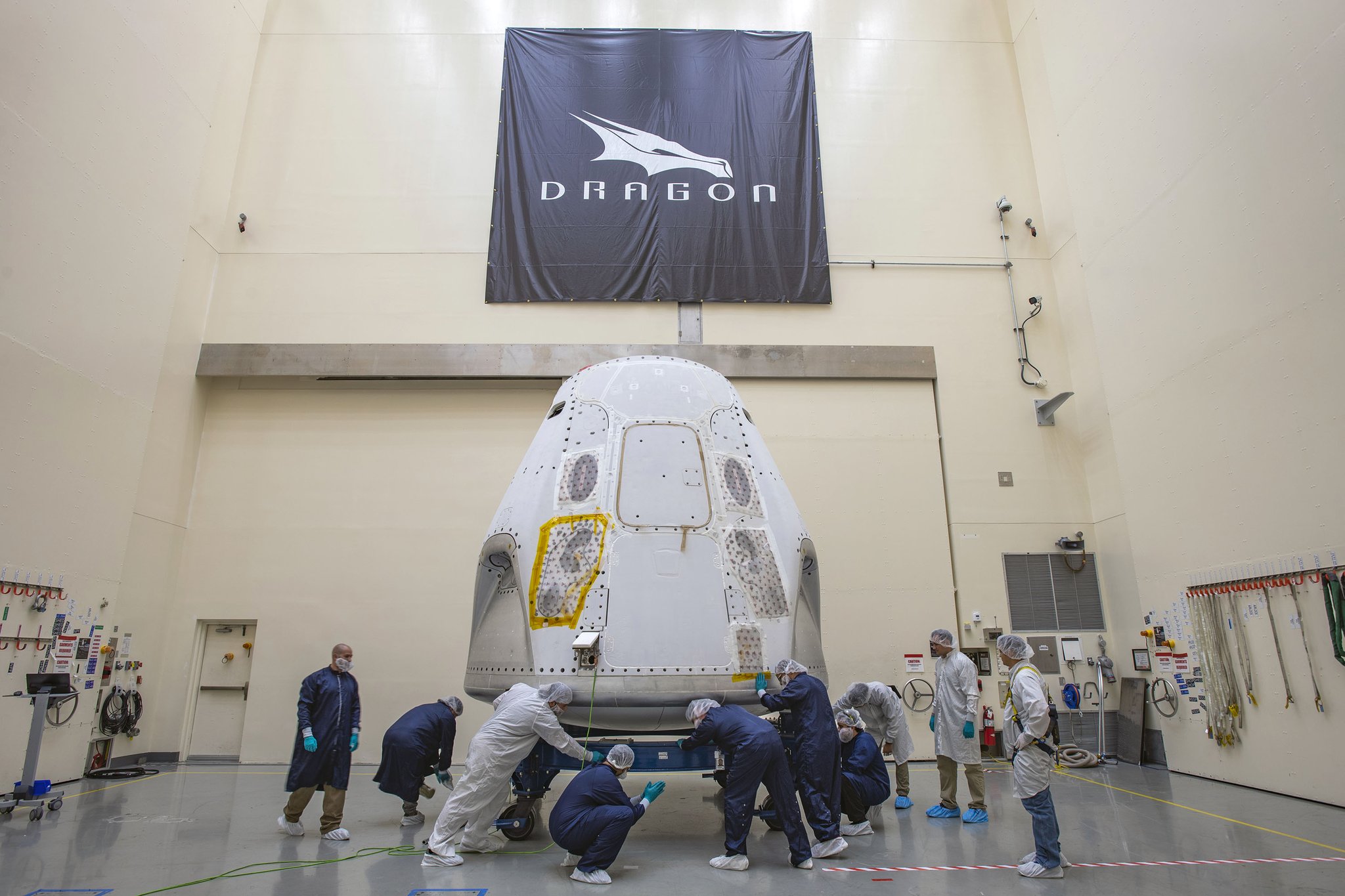
There’s only so much one can learn in a simulator, though, and this first crewed flight is still very much a test, the feedback from which will inform the next iteration of the capsule. It’s easier, after all, to push a software update than to rewire the pots of 20 different knobs in a system that goes back decades.
“We specifically, as part of this test flight, designed in some time in the preflight phase, as well as closer to space station, so we can test out actual manual flying capability of the vehicle,” Hurley explained. “Just to see and verify that it handles the way we expect it to, and the way the simulator shows it to fly. It’s a prudent part of our flight test just like anything else, in case the eventuality happened that a future crew needed to take over manually and fly the spacecraft. So we’re just doing our part, to kinda test out all the different capabilities of the Crew Dragon.”
We are sure to hear more about the version of Crew Dragon that will be flying later this month if everything goes according to plan. In the meantime I have asked both SpaceX and NASA for more information on the control scheme and its development.

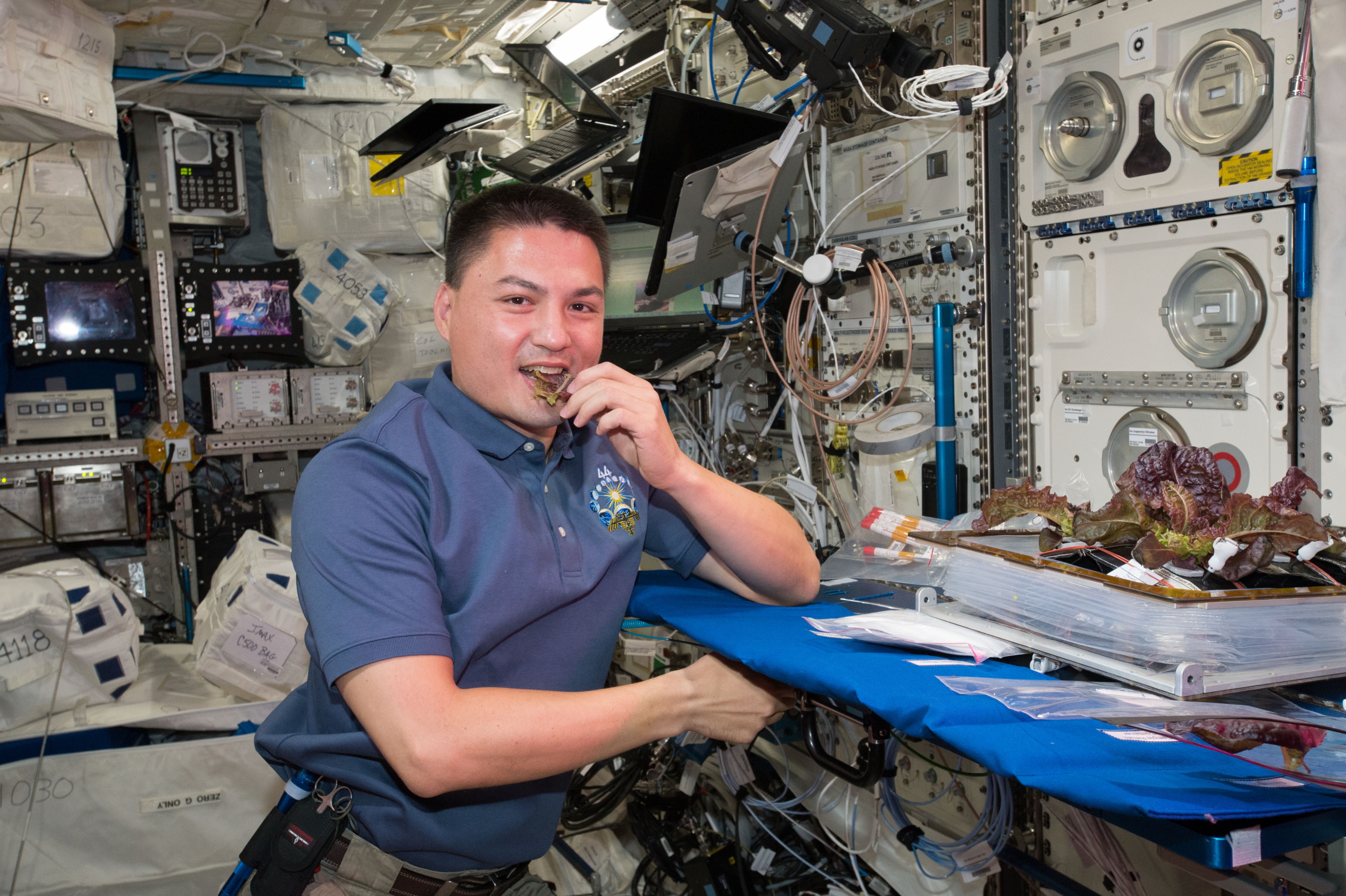
 SpaceX made history today, flying NASA astronauts Doug Hurley and Bob Behnken to space aboard its Crew Dragon spacecraft using a Falcon 9 rocket. The launch, titled ‘Demo-2’, is for the final demonstration mission in the human rating process of
SpaceX made history today, flying NASA astronauts Doug Hurley and Bob Behnken to space aboard its Crew Dragon spacecraft using a Falcon 9 rocket. The launch, titled ‘Demo-2’, is for the final demonstration mission in the human rating process of 